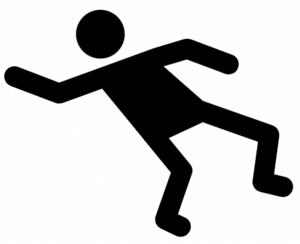The Ultimate Guide To Dementia Fall Risk
Table of ContentsOur Dementia Fall Risk DiariesThe smart Trick of Dementia Fall Risk That Nobody is Discussing3 Simple Techniques For Dementia Fall RiskAll about Dementia Fall RiskAn Unbiased View of Dementia Fall Risk
The FRAT has three sections: drop threat status, danger aspect checklist, and action plan. An Autumn Threat Status includes information concerning history of recent falls, drugs, psychological and cognitive condition of the person - Dementia Fall Risk.If the client scores on a threat element, the matching number of factors are counted to the person's loss risk score in the box to the far. If a patient's fall danger rating completes five or higher, the person is at high risk for falls. If the individual ratings just 4 points or lower, they are still at some danger of falling, and the nurse needs to use their finest professional assessment to take care of all fall threat aspects as part of an all natural treatment plan.
These basic techniques, in basic, assist develop a secure atmosphere that minimizes unintentional falls and marks core preventative actions for all patients. Signs are essential for individuals at danger for falls.
Getting My Dementia Fall Risk To Work
Wristbands need to consist of the client's last and initial name, day of birth, and NHS number in the UK. Just red shade should be utilized to signify special person standing.
Products that are as well far may call for the person to connect or ambulate unnecessarily and can potentially be a danger or contribute to drops. Helps stop the client from heading out of bed without any aid. Nurses reply to fallers' phone call lights more rapidly than they do to lights started by non-fallers.
Visual disability can substantially create drops. Hip pads, when used properly, may reduce a hip fracture when fall happens. Keeping the beds closer to the floor lowers the risk of falls and severe injury. Placing the mattress on the flooring significantly reduces loss risk in some medical care setups. Reduced beds are created to lessen the range a client drops after moving out of bed.
Some Known Details About Dementia Fall Risk
Individuals who are high and with weak leg muscle mass that try to sit on the bed from a standing placement are most likely to drop onto the bed since it's also reduced for them to lower themselves securely. If a tall patient attempts to obtain up from index a low bed without support, the individual is likely to drop back down onto the bed or miss the bed and drop onto the flooring.
They're made to advertise prompt rescue, not to prevent drops from bed. Apart from bed alarms, enhanced guidance for risky patients also might aid avoid falls.

Clients with a shuffling gait rise autumn chances dramatically. To decrease loss risk, shoes must be with a little to no heel, slim soles with slip-resistant walk, and support the ankles.
Dementia Fall Risk for Beginners
Individuals, particularly older adults, have actually minimized visual capability. Illumination a strange environment helps enhance exposure if the individual must stand up during the night. In a research study, homes with ample illumination record fewer falls (Ramulu et al., 2021). Renovation in lighting at home may lower fall rates in older adults (Dementia Fall Risk). The use of stride belts by all healthcare companies can advertise security when helping clients with transfers from bed to chair.

Caretakers are reliable for guaranteeing a safe, safeguarded, and secure atmosphere. Studies demonstrated very low-certainty proof that caretakers decrease fall threat in intense care health centers and only moderate-certainty that options like video clip surveillance can minimize sitter use without raising loss threat, recommending that sitters are not as helpful as initially thought (Greely et al., 2020).
The 10-Minute Rule for Dementia Fall Risk

Increased physical conditioning minimizes the risk for drops and restricts injury that is suffered when loss transpires. Land and water-based workout programs might be similarly useful on equilibrium and gait and thus minimize the danger for drops. Water exercise may contribute a positive advantage on balance and stride for females 65 years and older.
Chair Rise Exercise is a basic sit-to-stand workout that assists reinforce the muscle mass in the upper legs and butts and enhances movement and freedom. The goal is to do Chair Rise workouts without using hands as the client ends up being stronger. See sources area for an in-depth instruction on how to perform Chair Rise exercise.